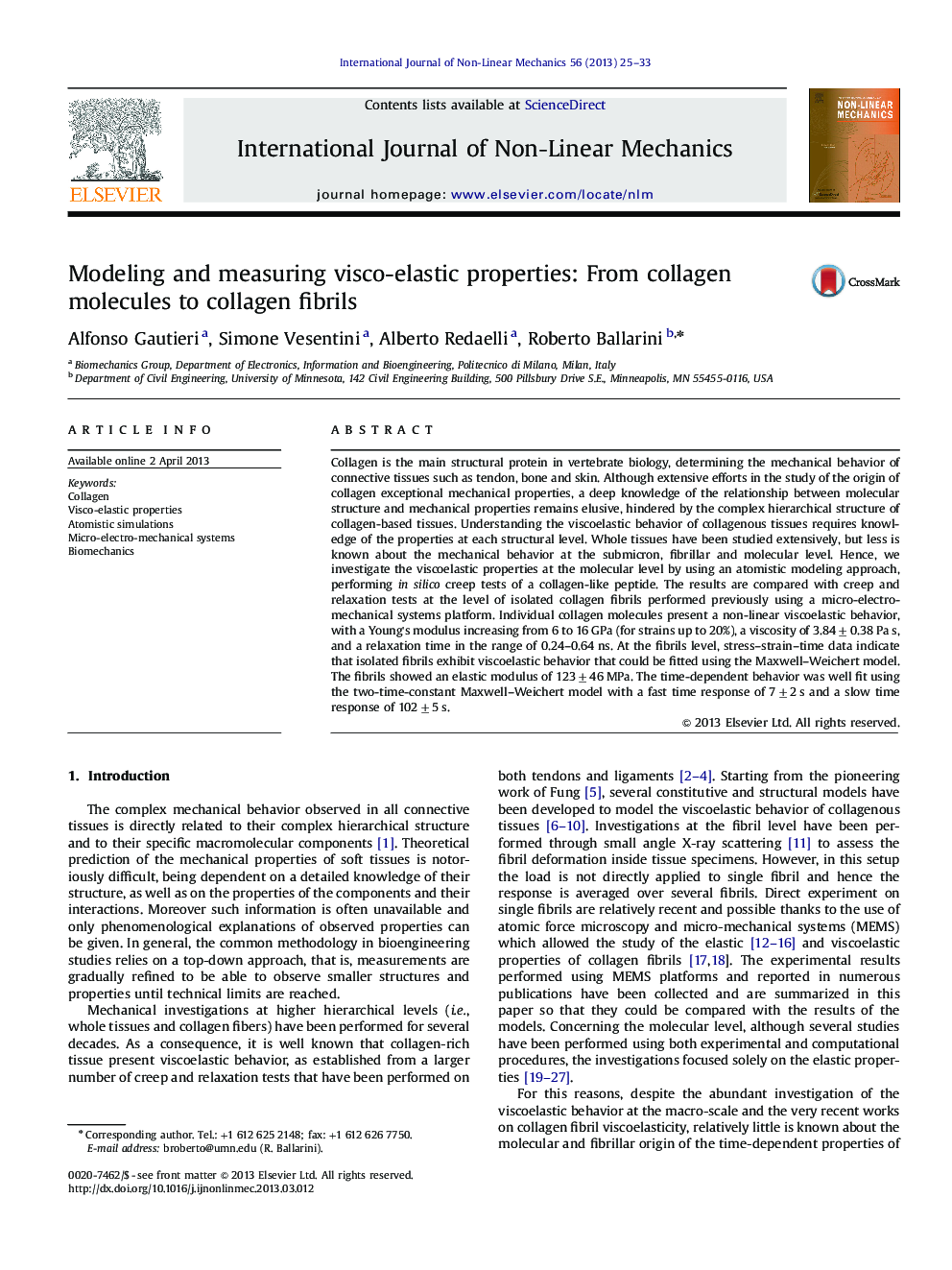| Article ID | Journal | Published Year | Pages | File Type |
|---|---|---|---|---|
| 787947 | International Journal of Non-Linear Mechanics | 2013 | 9 Pages |
•We developed a multiscale model of the creep behavior of collagen molecules and fibrils.•We report measurements of the relaxation times of collagen fibrils.•We describe the use of MEMS platforms for measuring the mechanical properties of nanoscale fiber-like materials.
Collagen is the main structural protein in vertebrate biology, determining the mechanical behavior of connective tissues such as tendon, bone and skin. Although extensive efforts in the study of the origin of collagen exceptional mechanical properties, a deep knowledge of the relationship between molecular structure and mechanical properties remains elusive, hindered by the complex hierarchical structure of collagen-based tissues. Understanding the viscoelastic behavior of collagenous tissues requires knowledge of the properties at each structural level. Whole tissues have been studied extensively, but less is known about the mechanical behavior at the submicron, fibrillar and molecular level. Hence, we investigate the viscoelastic properties at the molecular level by using an atomistic modeling approach, performing in silico creep tests of a collagen-like peptide. The results are compared with creep and relaxation tests at the level of isolated collagen fibrils performed previously using a micro-electro-mechanical systems platform. Individual collagen molecules present a non-linear viscoelastic behavior, with a Young's modulus increasing from 6 to 16 GPa (for strains up to 20%), a viscosity of 3.84±0.38 Pa s, and a relaxation time in the range of 0.24–0.64 ns. At the fibrils level, stress–strain–time data indicate that isolated fibrils exhibit viscoelastic behavior that could be fitted using the Maxwell–Weichert model. The fibrils showed an elastic modulus of 123±46 MPa. The time-dependent behavior was well fit using the two-time-constant Maxwell–Weichert model with a fast time response of 7±2 s and a slow time response of 102±5 s.
